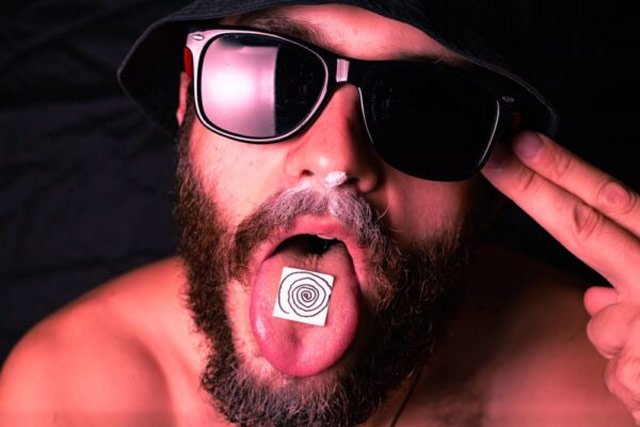Lysergic acid diethylamide (LSD), often branded as acid, is an illegal hallucinogenic drug. It was initially used in hospitals to treat patients with psychological disorders, but it was later banned in 1967. Today, it’s only used for recreational purposes and is categorized as a Schedule I drug class in the US.
Also known as acid, LSD can be detected in urine for up to 8 hours and in the blood for up to 12 hours. However, a urinary metabolite of LSD, 2-oxo-3-hydroxy-LSD, can stay in your body for up to 5 days.
In this article, we will educate you on the length of time LSD stays in your system, whether it shows up on a drug test, what may trigger a false positive drug test, whether you can get tested for the drug on probation, health risks, and the means of cleansing LSD out of your system.
How Long Does LSD Stay in Your System
LSD has street names such as Dots, blotter, and Yellow Sunshine. It’s an illegal drug and one of the most potent mood-changing substances. When you consume LSD orally, it’s absorbed by the gastrointestinal system and then channeled into your bloodstream. Once in the bloodstream, the drug travels to your brain and other organs, including the liver. Your liver breaks it down into various chemicals.
LSD is quite unstable and is broken down by the liver fairly quickly. For this reason, the time LSD is detectable in your tissues is restrictive, and doctors are required to analyze samples quickly. Some researchers have also tried to develop methods that will help detect traces of LSD by its byproducts. However, the amounts of LSD remaining in your tissue are still very low.
LSD Detection in Urine
When compared to the detection window of other drugs, LSD has a relatively short life. Its detection in urine is eight hours after administration. However, a urinary metabolite of LSD, 2-oxo-3-hydroxy-LSD, can stay in your body for up to 5 days.
LSD Detection in the Blood

According to modern research, it took 16 hours to detect blood samples from individuals when given 200mcg of LSD. Another experiment stated that those given a smaller dose of LSD, 100mcg, detected the substance in blood sample tests 8 hours after ingestion. The ability to detect LSD in the blood declined significantly following the 16-hour mark.
LSD Detection in the Hair
Just like any other drug, the detection of LSD using hair follicle tests occurs within 90 days since the first administration of the drug. Nevertheless, the application of this testing is rare. Detecting the drug in both forensic and research settings is very difficult because LSD dosage is taken in low amounts. Using the hair follicle method as an avenue of testing the presence of LSD is rare, very expensive, and unreliable.
LSD Detection in the Saliva
Saliva tests have low reliability because the concentration of LSD in saliva fluid is low, and the process can easily get manipulated. Its window of validity is short; detection of LSD can only take place from a few hours of administration to a few days. This method is commonly used in many workplaces due to its non-invasive and standard form.
Does LSD Show up On a Drug Test?
The testing of LSD or its metabolite, 2-Oxo-3-hydroxyl, does not necessarily happen with typical substance tests. The 13-panel drug test, which is quite comprehensive and not commonly used in many workplaces, does not screen for LSD. This happens because of the following reasons;
- Administration of LSD happens in low quantities (40-50μg)
- LSD has a relatively short half-life, making its window detection small
- A more viable option for substance testing. 2-Oxo-3hydroxy LSD testing has not gained much popularity, and many have not embraced it.
- LSD substance is not considered a physiological-addictive-substance; hence not regarded as a threat like other substances.
However, several specialized tests are available if employers become suspicious of an individual who may be using LSD. Therefore, it may be mandatory for certain employees to carry out the test. An ordering party (probation officer, employer, military, or police) ought to request these specialized tests explicitly and specifically. The following are the specialized tests to request for:
- EMIT- It involves a distinct series of tests conducted to detect LSD. The testing level happens in the urine and serum.
- Abuscreen- This method screens for the blood serum, stomach contents, whole blood, and urine for LSD and its associated metabolites.
Will I be Tested for LSD While on Probation?
Most employers and government offices use standard and cheap tests and do not test for the presence of LSD at all. LSD does not get tested in most probation drug tests, even though it can get checked on other platforms for other reasons. While on probation, it is recommended to shun away from any form of illegal drugs.
Even though many employers do not check for LSD while on probation, if you are caught using it, you will land yourself in more trouble than you anticipated. Carrying out a single LSD test is very expensive compared to other forms of drug tests. However, when caught with LSD, many employers have no problem ordering an LSD screening for your blood.
What Can Trigger a False Positive Drug Test?

False-positive drug tests occur when the applied drug detection methods analyze and recognize molecules in the body system as illegal substances even though you haven’t subjected your body to any form of illegal drugs. Research shows that drug tests produce false-positive results about 5-10% of the time. The following medications can result in a false positive drug test for LSD;
- Ambroxol
- Buspar (buspirone)
- Amitril (amitriptyline)
- Fentanyl
- Cardizem (diltiazem)
- Prozac (fluoxetine)
- Ritalin (methylphenidate)
- Risperdal (risperidone)
- Trandate (labetalol)
- Wellbutrin (bupropion)
- Veralan (verapamil)
- Zoloft (sertraline)
After undertaking an LSD drug test with positive results, it is advisable to have the test critically evaluated and the sample subjected to a second independent testing technique for confirmation. At all times, open up to your lab if you have ingested any form of over-the-counter or prescription so that your clinician can make an accurate interpretation of the drug screen results.
How to Cleanse LSD out of Your System
LSD drug substance does not remain in your body for a long time. However, if you need to speed up the process of elimination from the body, there are a couple of practical procedures you may undertake, which include:
- Cease from taking LSD- What matters most while testing for LSD is timing, and hence, the earlier you stop its administration before taking a drug test, the better because the likelihood of it getting detected is minimal.
- Hydrate urine takes the highest percentage when it comes to the excretion of LSD metabolites. This implication translates to keeping your body system hydrated at all times before, during drug testing, and after to eliminate the acid faster.
- Physical Exercises- This happens not to be the fastest form of fixing your situation. However, subjecting your body to exercises helps in boosting your metabolism. Lifting weights, in combination with aerobic exercises, possesses the most substantial influence on metabolism.
Health Risks Associated With Using LSD
LSD alters the normal functioning of the mind, causing hallucinogenic effects. These effects happen due to the interaction of the drug with the brain’s serotonin receptors, which aids in controlling mood and behavior, governing senses, and moderating your thoughts. The following effects are caused by LSD and may pose health risks to an individual;
- Hallucinations
- Dilated pupils
- Altered sounds
- Inaccurate visual perceptions of colors and shapes
- Flashbacks
- Depression and anxiety
- Increased body temperature, rapid heart rate, and high blood pressure
Taking the drug in large quantities causes severe psychosis and injury, while the influence of LSD often leads to death. The drug also leads to an impaired sense of detecting common dangers. After an LSD trip, abusers suffer from acute depression and anxiety and experience flashbacks (known as hallucinogen-persisting-perception-disorder).
Flashbacks happen drastically without signaling to people who possess any underlying personality problems and to those who chronically use hallucinogens. Those who use LSD occasionally and have great health may also experience flashbacks. Subjecting your body to persistent use of LSD causes Schizophrenia and long-lasting psychosis.




